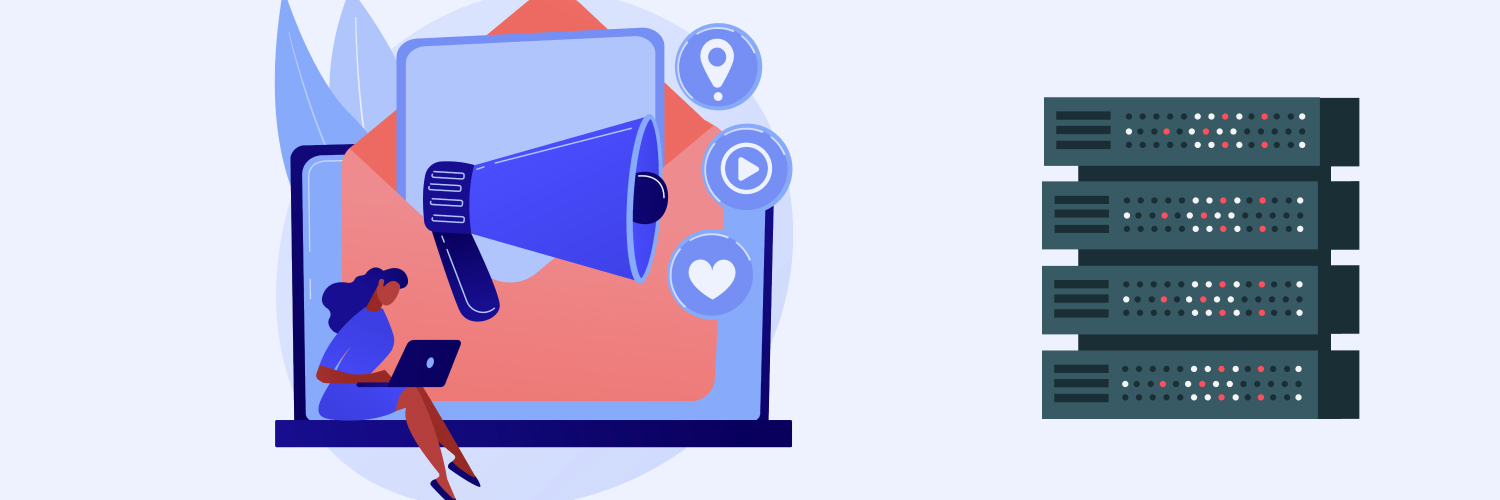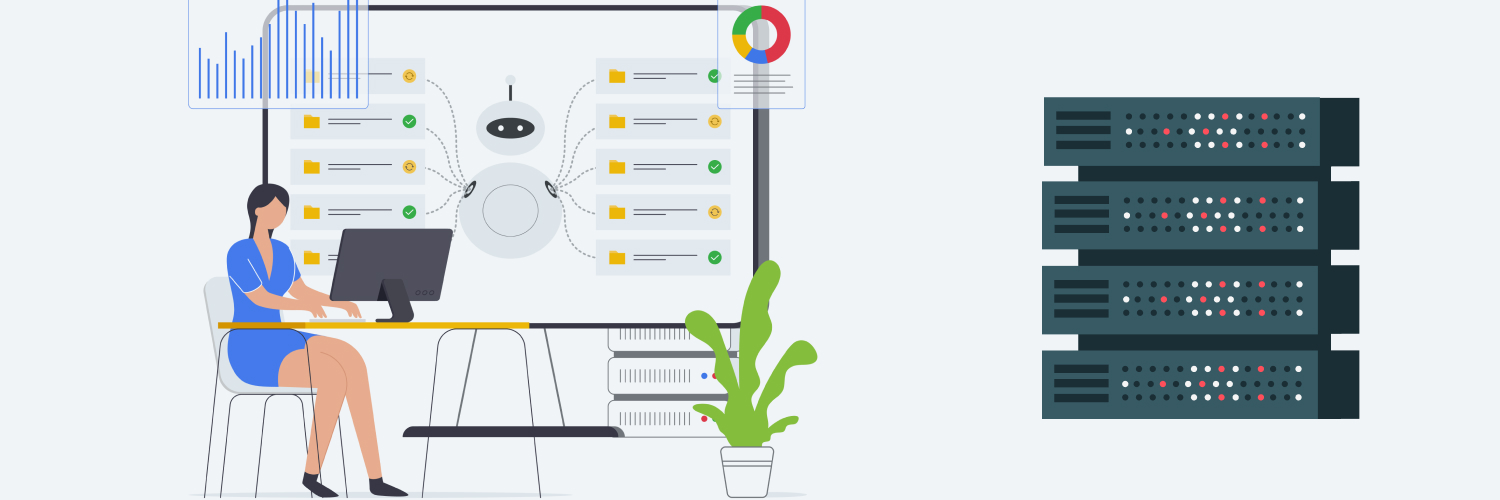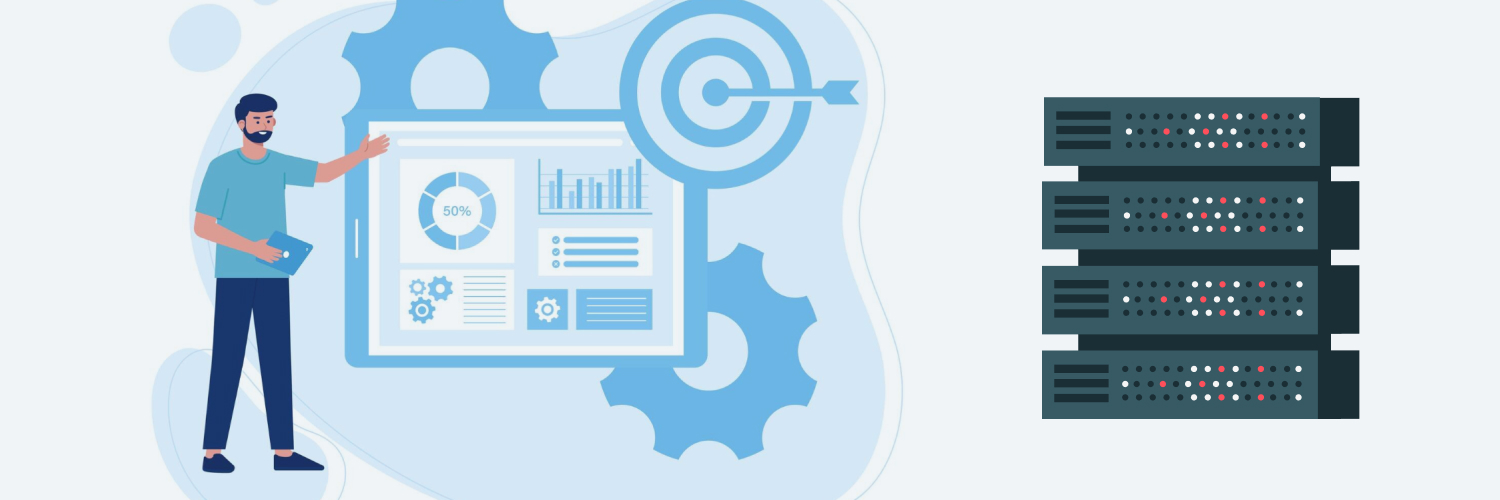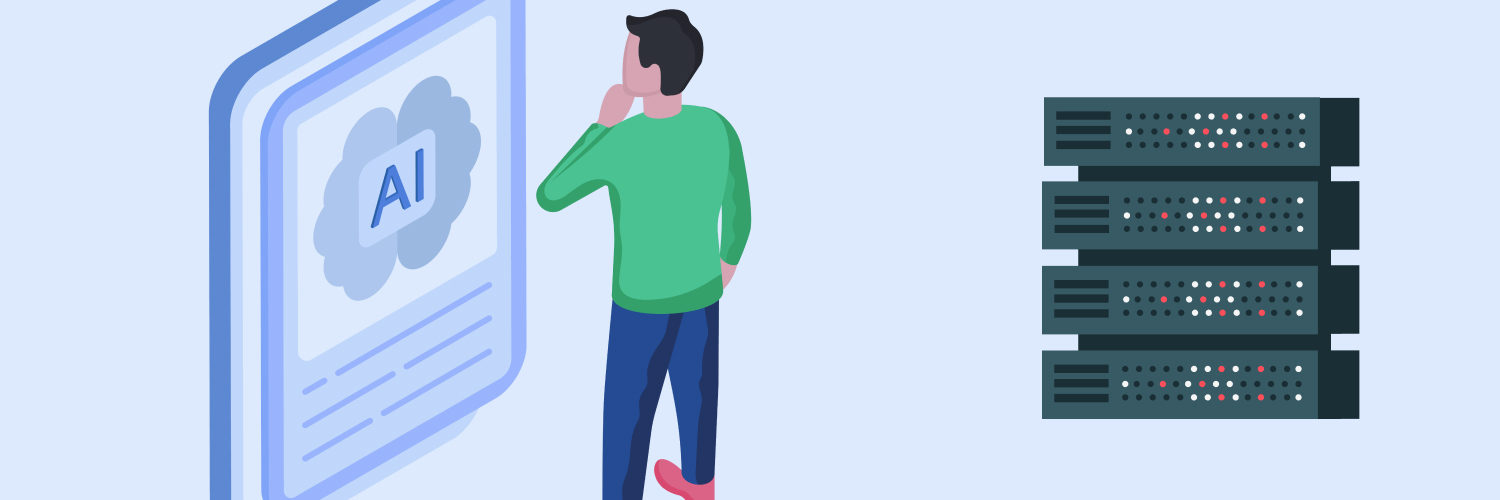Where To Buy SOCKS5 And SOCKS Proxies (And Why Use Them)
SOCKS4, SOCKS5, HTTP, HTTPS, IPv4, IPv6 — understanding proxy jargon can seem as difficult as learning a foreign language. There’s a lot to know. What’s the difference between protocols? And how can you tell which one is best for you? This complete guide will cover SOCKS5 proxies. We’ll go over what they are, how they work, their best uses, and where to get them. Read on to find out everything you’ve ever wondered about the SOCKS5 protocol.
What Are Proxies?

Before we get into SOCKS5 proxies, let’s discuss what a proxy is. A proxy server is an intermediary between your device and a network, such as the internet. Instead of connecting to the internet directly, your device sends its request to the proxy server. The proxy server then sends the request to the network, receives the response, and sends it back to your device. Proxies can:
- Improve performance by using caching mechanisms to store requested resources.
- Protect your privacy by hiding your actual IP address.
- Encrypt your data so that it can’t be read during transit.
Proxies work by following a network protocol, a set of rules for how devices transmit data on a network. There are a variety of different protocols and even more types of proxies. The SOCKS5 (SOCKS: Socket Secure) protocol is just one of these. If you’re already familiar with the basics of SOCKS5, feel free to use the table of contents to navigate to the sections that interest you the most.
What Is a SOCKS5 Proxy?

A SOCKS5 proxy uses a SOCKS5 network protocol to communicate with servers through a firewall on behalf of a client. A SOCKS5 proxy server uses Transmission Control Protocol (TCP) or User Datagram Protocol (UDP) to transmit data to the server behind the firewall. It then facilitates data exchange between the client and the end server. The SOCKS5 proxy sends the traffic without interpreting it. This makes it a good option for clients behind a firewall who aren’t permitted to establish TCP connections outside of it any other way.
How Does a SOCKS5 Proxy Work?

The SOCKS5 protocol uses tunneling to transport data across a network. It does this by sending packets of data. Packets are bits of data broken up for transport and then reassembled once they reach their destination. Tunneling can set up efficient connections, bypass firewalls, and enable unsupported protocols on a network. Tunneling can be done via TCP or UDP.
Each type of transport has benefits and drawbacks. A TCP connection is more reliable but slower. It establishes a connection and doesn’t break it until all the data is transferred. It can transmit data in order and guarantees the data was delivered to its destination.
UDP is a connectionless protocol. It’s a faster, simpler, and more efficient way to transmit data, but it’s not possible to retransmit lost data via UDP. With UDP, there’s also no way to guarantee the data was delivered.
SOCKS5 uses secure shell (SSH) tunneling to transmit data. This method provides secure remote transmission in a network. Computers in a network talk to each other using specific protocols. While this makes communication efficient, anyone in the network can intercept and read the transferred data. An SSH tunnel eliminates this vulnerability by using encryption and hashing algorithms to prevent your data from being read in transit.
A SOCKS5 proxy works on level 5 of the Open Systems Interconnection (OSI) Model, which is the session layer. The OSI defines seven layers of functionality in a networking system:
- Physical
- Data Link
- Network
- Transport
- Session
- Presentation
- Application
Because it sits in layer five, above the TCP and UDP in the transport layer, a SOCKS5 proxy can handle more protocols than other types of proxies, including HTTP, HTTPS, POP3, SMTP, and FTP. This helps ensure that all data packets arrive at their destination intact regardless of their protocol.
SOCKS5 vs. SOCKS4

There are two versions of the SOCKS protocol: SOCKS4 and SOCKS5. The most significant difference between the two is the level of security. SOCKS5 is the newest version, and SOCKS4 doesn’t support encryption, authentication, or UDP. Because of these updates, SOCKS5 is more secure and faster.
SOCKS5 protocol supports three different types of authentication, including:
- Null authentication: No authentication is required to connect to a proxy.
- Authentication of username or password: You need credentials to connect to a proxy.
- GSS-API authentication: You and the server must authenticate your identity at the operating system level.
SOCKS5 vs. HTTPS

Another popular type of proxy is the HTTPS proxy. Although there is a lot of overlap in their uses, some significant differences may make one a better choice than the other, depending on your use case.
HTTPS stands for HyperText Transfer Protocol Secure, and it’s an updated version of HyperText Transfer Protocol (HTTP) that encrypts your data before it’s transmitted. It’s more limited in scope than the SOCKS5 protocol. It was designed for HTTPS or HTTP traffic and doesn’t support any other type. HTTPS operates in the seventh layer (application) of the OSI model. This makes it a high-level protocol with more features.
HTTPS proxies can interpret data, so they can be used for content filtering or caching, whereas a SOCKS5 proxy transmits data without interpreting it. Because it interprets data, HTTPS proxies can provide additional security and efficiency by filtering out unnecessary or malicious data.
Another difference between SOCKS5 and HTTPS proxies is that HTTPS proxies can configure headers. This can give you additional authority when using proxies for web scraping. Configuring your header can also help you avoid digital fingerprinting, which can increase your anonymity on the internet.
Ultimately, a SOCKS5 proxy gives you more flexibility to use different protocols, while an HTTPS proxy gives you more features within one specific protocol.
Benefits of a SOCKS5 Proxy

A SOCKS5 proxy offers several key benefits, including:
Bypass IP address blocks
As with other types of proxies, SOCKS5 proxies let you bypass internet blocks. For instance, if you’re trying to access content as it would appear from another location, a proxy can let you do that. It’s also effective if you live in a country that blocks access to parts of the internet.
Choice of transport protocol
With SOCKS5 proxies, you can use TCP or UDP to transport data. TCP connections are more reliable because the connection is maintained throughout the entire data transfer process. UDP is faster and more efficient, making it an excellent option for use cases involving large amounts of data. SOCKS5 proxies let you choose which to use.
Fewer limitations
SOCK5 protocol works with all traffic and can handle any program or protocol because it’s low-level and general. This means you can use SOCKS5 proxies with any network.
Better performance
SOCKS5 proxies don’t rewrite data packet headers, so there’s less chance your data will be mislabeled or misrouted. They also send smaller packets of data that transport faster. This improved performance lets SOCKS5 proxies work well with P2P websites and platforms.
Balance between anonymity and speed
SOCKS5 proxies are flexible, fast, and secure. They’re a great option when you’re hoping for a quick and secure solution that will work in various situations.
Use Cases for SOCKS5 Proxies

Due to their flexibility, speed, and anonymity, SOCKS5 proxies are suitable for a range of different use cases from individual to corporate, such as:
Traffic-intensive transport
SOCKS5 proxies are ideal for use cases that require transferring large amounts of data, such as P2P, gaming, and streaming. Web scraping from traffic-intensive sources such as videos or livestreams is easier with SOCKS5 proxies.
Bypass internet restrictions
Whether you’re trying to access websites that aren’t available in your country or get around government censorship, SOCKS5 proxies allow you to bypass many firewalls. However, some more advanced firewalls such as those at the government or ISP level may still block SOCKS5 proxies. It’s also possible that your header data could identify you since it’s not encrypted.
Remote connections for local networks
Businesses that want to establish secure remote connections to local networks can use SOCKS5 proxies. Combining SOCKS5 proxies with authentication and other encryption applications will ensure your remote connections are secure.
Web scraping
With almost every business moving toward incorporating data-driven decision-making at all levels of operations, access to high-quality data is a top priority. Web scraping is the most effective way to extract value from the massive amounts of unstructured data users create daily.
Web scraping is the process of using an automated program (bot) to extract data from a website and export it to a readable format for analysis. Bots are capable of extracting a tremendous amount of data. While you can run most data scraping projects with an HTTPS proxy, a SOCKS5 proxy provides the advantage of scraping data from any TCP or UDP transport. This lets you scrape data sources such as live video streams that aren’t accessible with an HTTPS proxy.
Almost every industry uses data gathered from web scraping in some form. Some of the most popular use cases of web scraping include:
Price comparisons
You can formulate a competitive pricing strategy by keeping an up-to-date price list for the products and services in your industry. Even if you’re not competing on price, knowing comparable prices can help drive your marketing strategy.
Market research
Scraping data to determine what customers think of a specific product or what features they’re raving about can drive product development. Instead of putting out a product and hoping customers like it, you can give customers what they’re already asking for. This strategy provides a guaranteed market for your product or service.
Customer service
With social media a ubiquitous part of everyday life, customers expect brands to respond quickly when they reach out on social media. However, paying people to monitor your social media mentions continuously is expensive and inefficient. Web scraping can alert you anytime your brand is mentioned on social media, blogs, and forums so that you can quickly address any customer concerns or questions. Providing excellent customer service on a public platform will bring you more goodwill than any marketing campaign.
Configuring a SOCKS5 Proxy

You’ll need to configure your browser to use a SOCKS5 proxy, and you’ll need your proxy IP and port from your proxy provider.
To configure a SOCKS5 proxy on Chrome, take the following steps:
- Access settings on the dropdown menu in the upper right corner.
- Scroll down and click on “Advanced,” then “System,” then “Open Proxy Settings.”
- Check the “SOCKS Proxy” box on the right.
- Enter your SOCKS5 proxy IP and port in the “SOCKS Proxy Server field.”
- Click “Okay.”
- Click “Apply” in the Main Network Settings window.
To configure a SOCKS5 proxy on Firefox, do the following:
- Access preferences from the dropdown in the menu in the upper right corner.
- Scroll down to “Network Proxy Settings” and click on “Settings.”
- In the “Connection Settings” window, click “Enable Manual Proxy Configuration.”
- Enter your IP and port into the “SOCKS Host” field.
- Click “Okay.”
Types of Proxies

Proxies aren’t just categorized by the type of protocol they support. Different SOCKS5 proxies can be categorized based on where they originate, who owns them, and how many users have access. Although it can seem complicated, it’s important to understand all of the different proxy characteristics so you can decide which option is best for your use case.
Data center proxies
SOCKS5 data center proxies originate in a data center. Data center proxies can be an excellent option for use cases that require a lot of speed, such as gaming or streaming.
One downside to data center proxies is that they’re easily identified as originating from a data center. Since normal users don’t access the internet with data center proxies, this can raise red flags if you want to mimic human behavior when web scraping. Some websites block all data center IPs. Other websites aren’t that drastic, but they may block the entire subnet if they detect bot-like behavior from a data center IP.
If you’re using data center proxies, make sure your provider has extensive subnet diversity and free replacements in case of bans. Rayobyte offers data center proxies in over 26 countries. With 20,000 unique C-class subnets and nine ASNs, you’ll never have to worry about subnet bans. Our unlimited bandwidth and free replacements let you quickly recover from any bans and give you maximum uptime.
Rotating proxies
If you simply want to hide your real IP address, you can use a static proxy IP. It substitutes a different IP address for your current one. It’s a great way to ensure anonymity and privacy on the internet.
However, if you’re using proxies for web scraping, swapping one IP address for another static one won’t help. Many websites ban IP addresses if they detect bot-like behavior. Since web scrapers send out requests far faster than humans, they’re easily identifiable as bots unless you frequently change your IP address.
This is where rotating proxies come in. Every time you send a request, it goes out with a different IP address. Your scraper will send 1000 requests with a separate IP address, making it look like 1000 users are sending individual requests instead of one sending 1000 requests.
Shared proxies vs. private proxies
Another factor to consider when choosing proxies is whether they’re shared or private. Private proxies, also called dedicated SOCKS5 proxies, are only used by you, and more than one user uses shared proxies. Each situation has its advantages and disadvantages.
Shared proxies
The biggest advantage of shared proxies is that they’re cheaper. Shared proxies cover a variety of situations and can range from proxy pools shared among thousands or only two or three users. But proxies that many people share have performance and security issues. The more people who use the proxy pool, the bigger the problems are.
Shared proxies can be extremely laggy because multiple users are using them simultaneously. Even if all users are good digital citizens, performance can be slow, and not all users are on the up and up. When you’re sharing proxies, you can get banned for other users’ bad behavior, which is called the bad neighbor effect. Shared proxies can also put your data at risk, particularly on a SOCKS protocol when there’s no additional encryption.
Private proxies
Private proxies are reserved just for you, and no one else can access them. These are the most secure proxies, and you don’t have to worry about performance issues or the bad neighbor effect. These are the ideal proxies for web scraping use cases. The only downside is that they’re more expensive than any other option.
Semi-dedicated proxies
Semi-dedicated proxies can be a good compromise. These proxy pools are usually shared with just one or two other users. If your proxy provider carefully vets its clients, this can be a good option. They aren’t as secure or fast as private proxies, but they’ll have far fewer security and performance issues than widely shared proxy pools.
Free SOCKS5 proxies
While free proxies may sound like the perfect solution, this is one type of proxy you should avoid at all costs. Free proxies are the ultimate shared proxy. You can’t control who accesses them, so there’s no way of knowing if they’ve been banned. So many users use free proxies that they’re extremely slow and frequently banned.
Performance issues aren’t the biggest problem with free proxies, however. They’re also a massive security risk. Your data can be intercepted and read by others. There have even been instances of malicious actors offering free proxies to install malware.
How To Get SOCKS5 Proxies

The most important thing to look for in a SOCKS5 proxy provider is a vendor you can trust. At Rayobyte, we provide ethical, reliable proxies with the most authority. For years, proxies have been associated with questionable characters and black-hat activity. However, with the rise in data analytics, web scraping has become the most effective way to gather large amounts of data for analysis. Web scraping relies on proxies, and now Fortune 500 companies, government agencies, and highly-respected businesses regularly use proxies.
If you want to know how your proxy provider sources their proxies, just ask. Anything less than a full and transparent explanation of their practices should be a red flag. Rayobyte is happy to talk about how we source our proxies and how we vet our clients. Reach out to our team today to find out how we can help you achieve your goals.
Final Thoughts

Proxies can be a confusing topic. There are many different types of proxies, and sometimes it’s hard to decide which is the best for you. One important characteristic of proxies is the type of internet protocol they follow. SOCKS5 proxies use the SOCKS5 protocol, which has some significant advantages, particularly if you’re using them for web scraping or other use cases that are data-intensive.
SOCKS5 proxies provide a good balance between security and speed. They’re faster than other types of proxies because they can use UDP, send smaller data packets, and don’t rewrite headers. They also provide a secure option by using SSH tunneling and authentication. However, it’s important to remember that the SOCKS5 protocol doesn’t have built-in encryption, and your headers can be read because they aren’t rewritten. SOCKS5 proxies are a good choice for avoiding censorship or geo-restrictions and are ideal for data scraping from traffic-intensive sources since they can handle a lot of data efficiently.
You can pick shared, private, or semi-dedicated proxies. Shared proxies are often plagued by performance and security issues, while private proxies are high-performing and secure but more expensive. Semi-dedicated proxies are shared among two or three users, so they’re less costly and can still be fast and secure if bought from a reliable proxy provider.
That’s the most important decision you can make. Rayobyte goes farther than any other company to earn your business and trust. Our ethics drive every business decision we make, and we are committed to doing business ethically or not at all. That’s why Fortune 500 companies, government agencies, small businesses, and individuals trust us for all of their proxy needs. We provide the fastest and most reliable proxies on the planet.
The information contained within this article, including information posted by official staff, guest-submitted material, message board postings, or other third-party material is presented solely for the purposes of education and furtherance of the knowledge of the reader. All trademarks used in this publication are hereby acknowledged as the property of their respective owners.



